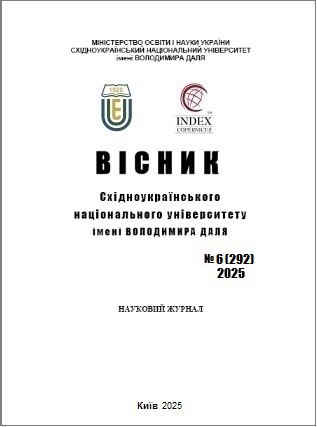Forecast of hazardous properties of coal layers as a socio-economic effect of investments in labour protection
DOI:
https://doi.org/10.33216/1998-7927-2025-292-6-42-48Keywords:
innovation, investment, efficiency, coal industry, regulatory frameworkAbstract
The article analyzes the state of the coal industry, substantiates innovative directions of development taking into account international experience and using the mechanism of investment support for innovative development of coal enterprises.
Analysis of accidents that have occurred over the past few decades in mines of coal-mining countries shows that the root cause of their occurrence, in general, is the joint influence of factors of three blocks: geological processes of transformation of the starting material in natural conditions, mining and geological conditions of the occurrence of deposits and technological parameters of the operation of the coal enterprise. It was established that the most difficult to establish are the factors and their quantitative values that determine the conditions for the formation of dangerous properties of mine deposits in the process of geological transformations. Based on the analytical study of the state of the coal industry, the main systemic problems that are characteristic of this industry were identified. It is shown that the full-scale invasion of Russian troops into the territory of Ukraine significantly affected the work of Ukrainian enterprises, which led to a decrease in the growth rates of GDP in the extractive industries. It was found that one of the key indicators of the effectiveness of investments in improving working conditions is their social effect, which under any conditions of investment should be positive. The costs of implementing measures to improve working conditions in Ukrainian coal mines usually significantly exceed similar costs in other industrial sectors. This is due to the difficult mining and geological conditions, a high level of technogenic risks, the need to use specialized equipment for ventilation, degassing, dust suppression, as well as ensuring explosion and fire safety. All this requires significant financial resources and technical re-equipment. That is why investments play a decisive role in the restoration and expansion of production resources, which, in turn, contributes to ensuring sustainable economic growth. It was emphasized that the social effect of investments contributes to increased labor productivity, improved quality of products, preservation of labor resources, and other positive consequences.
References
1. Руднєв Є.С., Гальченко В.А., Філатьєва Е.М., Антощенко М.І. Про розробку загальної методики для прогнозу небезпечних властивостей вугільних шахтопластів / Вісті Донецького гірничого інституту, 2021, 2 (49). С. 135-148. https://doi.org/10.31474/1999-981X-2021-2-135-148.
2. Endl A., Tost M., Hitch M., Moser P., and Feiel S. Europe’s Mining Innovation Trends and Their Contribution to the Sustainable Development Goals: Blind Spots and strong Points / Resources Policy, 2021, 74, pp. 101440. https://doi:10.1016/j.resourpol.2019.101440.
3. Janine Lay, Anna Wiewiora, Alireza Javanmardi Kashan, Lisa Bradley. Operationalising a process model of innovation for the mining industry / Resources Policy, 2022, 79, pp.102988. https://doi.org/10.1016/j.resourpol.2022.102988.
4. Kryshtanovych, M., Akimova, L., Akimov, O., Kubiniy, N., and Marhitich, V. Modeling the Process of Forming the Safety Potential of Engineering Enterprises / International Journal of Safety and Security Engineering, 2021, 11 (3), pp. 223–230. https://doi:10.18280/ijsse.110302.
5. Jaroslaw Brodny, Magdalena Tutak. Challenges of the polish coal mining industry on its way to innovative and sustainable development / Journal of Cleaner Production, 2022, 375, pp. 134061. https://doi.org/10.1016/j.jclepro.2022.134061
6. Tian Tian, Bo Nie, Xinran Zhang, Xinqian Li, Xiantai Hong. Analyzing the socially sustainable impacts of private investments in the mining sector in rural areas / Resources Policy, 2024, 98, pp. 105347. https://doi.org/10.1016/j.resourpol.2024.105347
7. Alireza Javanmardi Kashan, Janine Lay, Anna Wiewiora, Lisa Bradley. The innovation process in mining: Integrating insights from innovation and change management / Resources Policy, 2022, 76, pp. 102575. https://doi.org/10.1016/j.resourpol.2022.102575
8. Кабанов А.І., Драчук Ю.З. Розробка рекомендацій з удосконалення нормативно-правової бази інноваційного розвитку вугільної промисловості (наукова доповідь). 2014, 63 с.
9. Рєпіна І.М., Швиданенко Г.О., Кукоба В.П. Управління ефективністю функціонування і розвитку підприємств : монографія – Київ: КНЕУ, 2016. 399 с.
10. Новікова О.Ф., Амоша О.І., Залознова Ю.С., Хандій О.О., Азьмук Н.А., Остафійчук Я.В., Шамілева Л.Л., Панькова О.В., Новак І.М., Шастун А.Д., Касперович О.Ю., Іщенко О.В., Красуліна Я.Є., Амелічева Л.П., Компанієць В.В. Трансформація соціально-трудової сфери в умовах цифровізації економіки: монографія. НАН України, Ін-т економіки пром-сті. Київ, 2022. 385 с. ISBN 978-966-02-9959-7
11. Amosha O., Cherevatskyi D., Lyakh O., Soldak M., Zaloznova Y. Canvas model of the mining regions’ industrial ecosystem based on a circular economy. E3S Web of Conferences. Volume 255, 2021. https://doi.org/10.1051/e3sconf/202125501001

